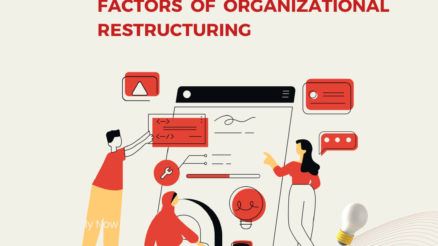Leadership plays decisive role in organizational change.
They wield a great deal of authority and influence over the people they lead, that’s they have ability to either make change initiative a success story or turn it into a complete failure.
Organisational change depends a lot on human resource and how people feel or think about change. So, leadership becomes naturally relevant in every change process because it is the leadership who manage human resource in an organization.
In this article, we’ll discuss about the role of leadership in change management and its importance within an organization.
Why the role of leadership in change management is important?
During the uncertain times of change, employees look up to their leadership and seek their trusted managers and supervisors for guidance.
Employee resistance is one of the most significant barriers to change therefore it’s critical that leaders give mentoring and direction to employees.
When leadership communication is done successfully during the change process, it aids in overcoming resistance and improves outcome of change.
If leaders aren’t trained in how to connect with employees and other stakeholders then organizations may find themselves with a significant gap in change support.
Who are leaders in change management process?
Change leaders are responsible to managing change at all levels of organization. They ensure smooth delivery of change process. Following are the type of leadership that is usually involve in change management process.
- Senior executives set the tone for the organization and their readiness to change fuels the entire hierarchy. They are in charge of all strategic objectives as well as the overall performance of the organization.
- Middle managers drive the change process with realistic and well-founded initiatives. They collaborate and engage together across multiple units to bring about organizational change.
- Frontline executives and their teams are often the first to detect new possibilities and challenges due to their proximity to markets, consumers, and partners, and are ideally positioned to make adjustments to effectively fulfil new role and responsibilities.
06 Roles of leadership in Change Management
Change leaders don’t limit themselves to just one or two roles during managing change. They need to lead from the front and fulfil their responsibility to deliver change that’s outcomes are unknown and uncertain.
Role of leadership in change management is varied from organization to organization but here are some of the key roles that are applicable to almost every scenario of change management.
Let’s check out
1. Being advocate of change
Being an advocate entails committing to the change and highlighting its benefits to employees and important stakeholders.
Leaders are usually role models for their employees. It’s natural that employees will listen to them if they are advocating something. But for having buy-in from employees effectively, leaders must prove through their actions that they practice those principles what they advocate.
“Walk the walk” is a successful change leadership strategy, which means that leaders must exhibit the behavior they want their staff to adopt.
If they tell employees that attending change training is vital, but they say they’re “too busy”. It employs that they’re setting a negative example and causing employees to disregard the training as well.
2. Communicator
A successful change management demands effective communication from leadership to keep employees aware and involved in change process. This reduces tension and conflicts caused by not knowing what’s going on and ensures that everyone is heading the same way during the change process.
Communication is also a vital tool for overcoming resistance of employees against change. It’s important to relay on two way communication by taking everyone’s feedback and suggestions regarding change process.
It is the responsibility of a manager or supervisor to ensure that employees understand what is expected of them throughout and after the change process, as well as crucial details such as training dates and locations.
3. Resistance manager
Recognizing and managing resistance to change is a crucial aspect of leadership’s involvement in transformation. It is so because the biggest reason for change failure is employees’ resistance.
Sometimes leadership’s behaviour causes resistance. And if it is so then employees resist it strongly. Leadership make suicidal mistake to use coercive measures to overcome resistance against change. But that is always counterproductive.
Therefore, the role of leadership in change management should be of resistance manager not that of resistance creator.
4. Bridge between change team and employees
One of the responsibilities of leaders is to act as a bridge between the change management team and employees. This ensures that communication flows smoothly in both ways. The change management team relies on leadership communication as well.
Employees may have concerns about the change and how it will affect them. If this is the case, it is the responsibility of change management leaders to seek answers from the change team and transmit them to their direct subordinates.
5. Mentor
Mentoring and coaching employees through change is an important part of effective leadership. It is the responsibility of change management leadership to mentor people through the transition process through group counseling and one-on-one sessions.
The purpose of coaching and mentoring is to help people progress through a succession of stages indicated in the change leadership model. These stages serve as a form of a road map in terms of change leadership communication.
6. Performance manager
Leaders manage the performance of employees by looking at the results. Leaders develop systems and tools to measure and receive feedback. That’s important because its inform them whether change journey is moving in right direction or not.
They should reflect on what’s working well and what could be improved with the information in hand.
What does role of leadership in change management requires?
Change leaders need certain skills to fulfil their role in change management.
Effective leaders are those who have those leadership skills which are required to deliver organizational change.
The good news is that these skills can be developed through learning experience. These skills include: strategic thinking, decision making, interpersonal communication, resilience, critical and analytical abilities etc.
Final Words
It is difficult to overstate the power of efficient and trustworthy leadership. Role of leadership in change management is extremely significant. Leadership practices for managing change should be in place ahead of time. They should learn leadership skills that are consistently practised to ensure successful organizational change.



